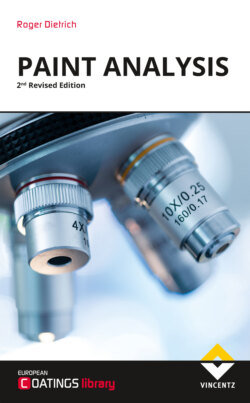Читать книгу Paint Analysis - Roger Dietrich - Страница 36
На сайте Литреса книга снята с продажи.
3.4.2Rinse sampling
ОглавлениеAnother choice for non-destructive sampling is rinse sampling. This technique can be used for thin soluble films and precipitations on coating surfaces.
Figure II.14: Rinse sampling a high-quality exterior coat of a ship
The required material for this kind of sampling is the same as for wipe sampling.
clean laboratory grade tissue
appropriate analytical grade solvents
clean laboratory grade glass container or vials
laboratory grade disposable gloves
disposable glass pipettes
The procedure is simple. An amount of 1 ml clean solvent is dropped on the target area making use of a pipette to ensure a confined contact of the solvent. It is allowed to run over the sampling area. The solvent (hopefully) picks up what is soluble and after that is collected and transferred to a sample vial which is immediately closed. The collection can be done by absorbing the solvent by an analytical grade clean tissue or paper or just letting it drop into the sample vial
As already mentioned, is has been experienced, that isopropanol or ethanol most commonly are suitable liquids for this kind of sampling, but it has to be checked for each individual site which kind of solvent is appropriate. As there is always a certain risk or probability that the testing solvent extracts components of the coating which are not the target of the investigation, it is highly recommended that a blank feed of a sound area has to be drawn.
Sampling failures happening at this stage of investigation are severe, because the sampling cannot be repeated. The targeted area is irreversibly changed by the sampling and thus cannot be used for a second sampling. Therefore, the sampling should be done by experienced staff.
Once the samples are in the lab, spectra of the targeted area and the sound area have to be collected exactly the same way (standardised process). The resulting spectra combine the information of the targeted (and hopefully rinsed) substance on the coating surface and the soluble substances that are inside the paint film and have been extracted to a certain extent. Therefore, the next step of data evaluation is spectral comparison and/or spectral subtraction in order to separate the desired information from the “background” of the coating. Typical sampling failures, which have to be avoided, are:
allowing the solvent to interact with the coating surface longer than the time necessary for dissolving the target substance (which might result in swelling of the paint)
using non-laboratory equipment
drying of the rinsing solvent during sampling
changing the sampling conditions between target area and reference area
